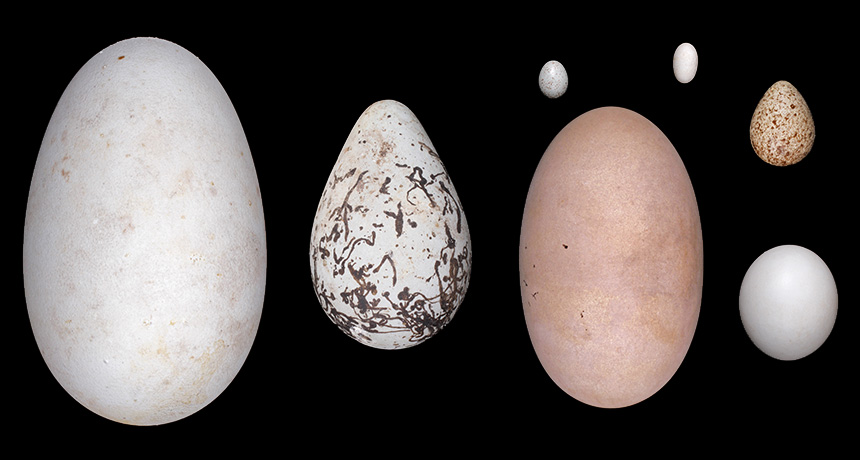
EGG DIVERSITY Bird eggs vary greatly in shape, size and color. In a new analysis, researchers look for links between egg shape and birds’ traits and lifestyles.
Harvard Museum of Comparative Zoology

EGG DIVERSITY Bird eggs vary greatly in shape, size and color. In a new analysis, researchers look for links between egg shape and birds’ traits and lifestyles.
Harvard Museum of Comparative Zoology